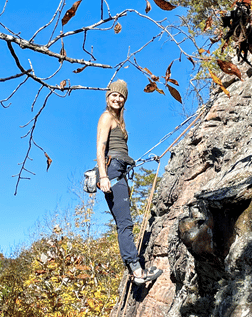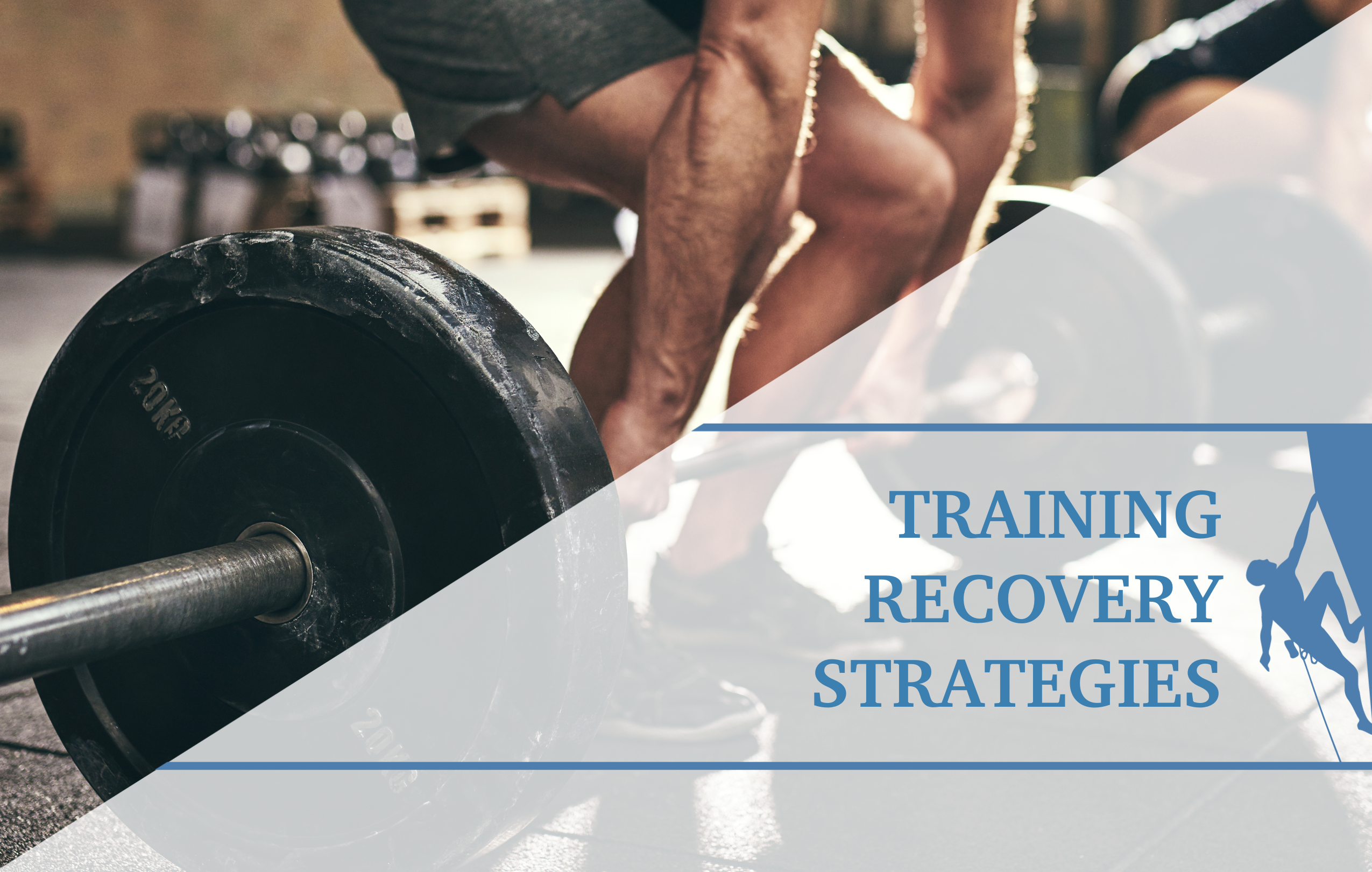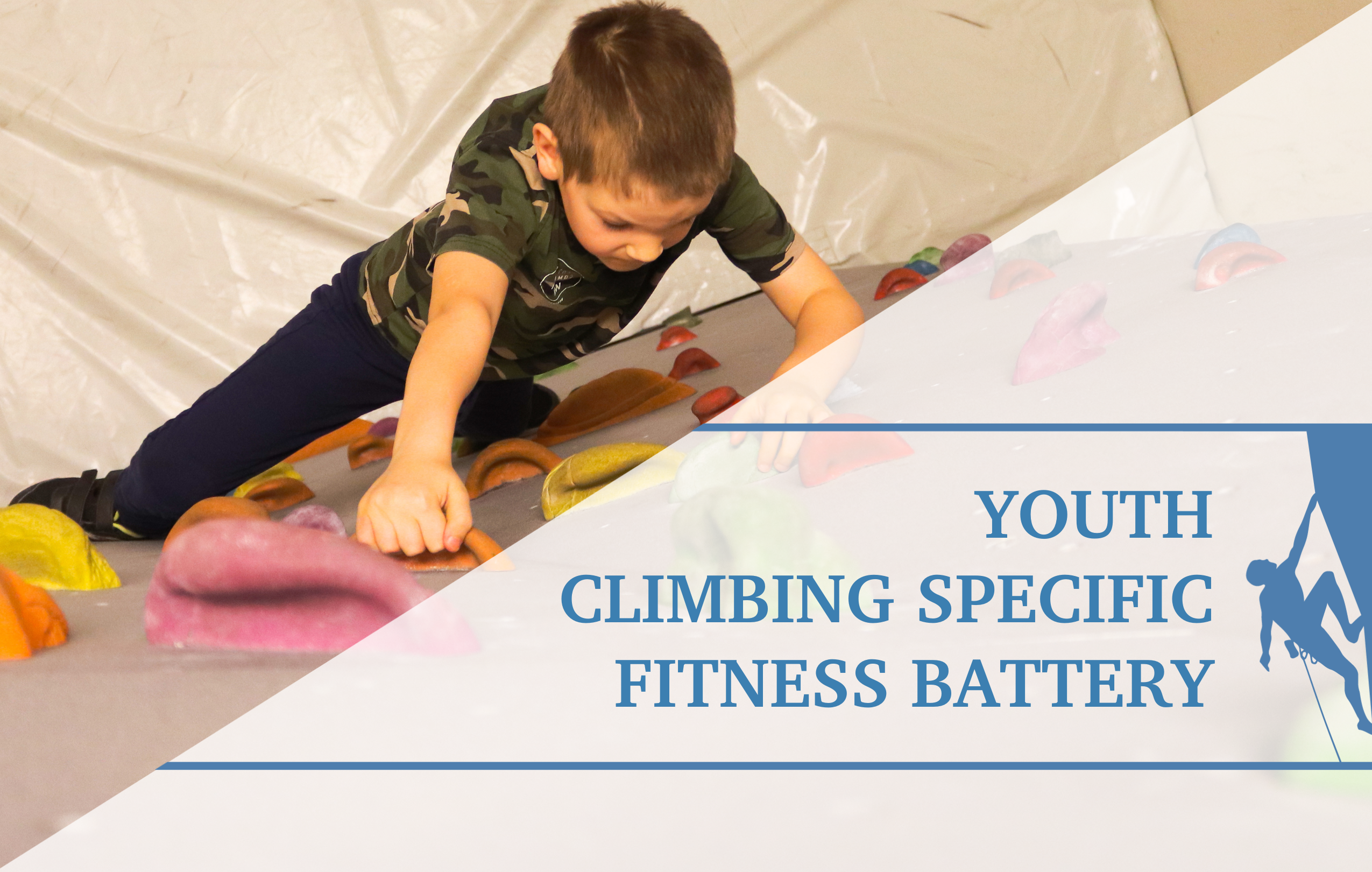Using a Home Climbing Wall for Endurance Training
Like many others during the pandemic, my local climbing gym got shut down. I was not as fortunate as others to have close access to outdoor climbing areas. It’s pretty flat here in Michigan, so this left me with two choices: drive 7+ hours to Red River Gorge or build a home wall. I chose the latter. I (well mainly my boyfriend and his brother) built a climbing wall in our spare bedroom during the pandemic. You may have built a home wall too. During this time, many other climbers built home walls to either help with training or have something close by to climb.
Now almost 2 years later, the climbing gyms have been opened and I have gotten back to sport climbing, my true love. With sport climbing vs. bouldering, endurance or power endurance is more of the focus vs. just power or strength. Your muscular and aerobic endurance are important factors needed when climbing longer distance routes and staying on the wall for longer lengths of time. I love sport climbing but have a bouldering wall at my house. How do I now utilize my home wall to help with sport climbing?
Even though overhung walls like home walls, moon boards, and kilter boards are mainly utilized to build power, they can maximize the endurance required for sport climbing.
Why Does Endurance Training Matter?
We all know that moment. When you’re just below the anchor with your last clipped bolt dangling well below your feet. Your forearms are screaming at you as you continue to fatigue. You start to panic. Your heart rate and respiratory rate increase. You start to panic more. How do you fight off the physiological effects and discomfort to make the send?
Different types of climbing require different physiological adaptations. Based on the specificity of training principle, performance improvements are specific to training. Training that mimics the style of climbing intended improves muscular performance required2. Shoulder endurance and aerobic endurance have been found to be correlated with climbing ability in both males and females 1.
Sport climbers can benefit from endurance or power endurance based on the style of climbing. Sport climbs with lower intensity moves but longer duration between rest sports would have an emphasis on endurance training 3. Power-endurance may be more suited for sport climbs with power to be sustained over longer periods such as on demanding crux moves 4. The bottom line is, the more your training matches with the demands of the style of climbing you want to do, the better adaptations you will see.
What exactly are strength, power, and endurance?
The definition of strength is the ability to apply force to overcome resistance. The more resistance a person can lift or withstand, the more strength they possess5. Think of the smallest hold you can stay on as a 1 RM (repetition maximum). Power comes down to a simple math equation: Power = work/ time. Power is the ability to overcome resistance over a short amount of time. Power is strength applied quickly. Power can be thought of as explosive dynos. Endurance is the ability to maintain a less difficult amount of work for a prolonged period. When applied to climbing, this could look like climbing at a low intensity for a long time like on a 70-foot lead route 4. Power endurance is the ability to apply power over a longer duration. This would be more consistent with doing a longer bolder problem or climbing an overhung sport route. Below is a table laying out intensity and duration based on training goals 6.
| Training Goal | Duration | Number of Moves | Rest | Intensity (%1 RM) | Primary Method of Training |
|---|---|---|---|---|---|
| Strength | 1-8 sec | 1-5 | 3-5 min | 70-80% | static hangboard, system wall, bouldering |
| Power | 1-8 sec | 1-5 | ~4 min | 30-60% | dynamic hangboard, system wall, bouldering |
| Power- Endurance | 9-120 sec | 6-30 | 2-4 min | 30-60% | 2-3 problem links, traverse into problems, rhythm intervals |
| Endurance | 2 min to 60 min | 30+ | 1-25 min | 30-50% | 4-6 problem links, extended traversing sessions, multiple laps on routes |
Home Walls
Overhung walls like home walls, moon boards, and kilter boards are typically utilized to build power. It is easier to increase the intensity by the amount the wall is tilted. Therefore, overhung walls work so well to cultivate power. Climbers focus their efforts on a few moves and ultimately spend less time on the wall with longer rest periods. The greater a person’s power is, the more time can be spent on the wall. Remember power = work/ time. Thus, increasing power leads to increases in endurance and power endurance.
How to Build Endurance on a Home Wall
While overhung walls are most used for power training, implementing the following strategies could help maximize your time on the wall to progress endurance. Prior to your endurance program, start with a dynamic mobility warm up. This will help to prime the muscles for movement. Warm up climbing by starting on easier routes. Continue with your endurance program by utilizing medium level linked bolder problems more similar to the length of lead routes continuing on the idea of specificity of training. Instead of maxing out to your projecting level, reduce your climbing grade to something that you are able to maintain form for >3min.
Mobility Warm-Up
- Dynamic hamstring stretch
- Dynamic quad stretch
- Add side bend/ 1 arm pulldown
- Add thoracic rotation
- Side to side lunge
- Wrist mobility
- Dynamic lattimus dorsi stretch
Endurance/ Power Endurance Programs
- Warm-up on the wall
- Rainbow routes
- 1-3 routes V0 and up to personal onsight grade
- Training on the wall:
- 4 x 4
- Select 4 problems
- Climb each problem 4 times in a row
- Rest for 4 min after each set
- 4 x 4
-
- Link medium-level problems
- Perform 3-9 minutes of continuous climbing for each set
- Do a problem roughly every 90 sec-2 min
- Rest for 15 min or more after each set
- Perform up to 4 sets
- High density 7
- Select 3-4 problems at your onsight grade
- Climb problems for 20 min (Rest as needed between problems)
- Rest for 20 min after each set
- Perform up to 3 sets
- Link medium-level problems
Movement Techniques
- Keep high movement quality
- Know when to stop
- Take rest breaks as needed
- Rest when form starts to degrade
- Diversify training
- Endurance/ power-endurance train up to 3 times per week
Incorporating Endurance Training into Your Climbing Routine
Utilize the different endurance/ power endurance programs. The key here is to stop climbing once your form degrades. Once you can no longer maintain your form, you are no longer effectively training power or power endurance. Because of this, you are not being specific in training. You want to structure your workout similar to what you are trying to achieve.
Diversify your training. Even though endurance training is important for endurance-based routes, improving strength and power will additionally help to improve your climbing. For best results, perform 2-3 days of endurance training with 2-4 days of strength and power. Additionally, make time to spend sport climbing to incorporate into endurance training. Be sure to allow for at least 1 day of recovery per week and more as needed. Recovery allows the muscles to build themselves back up so you can continue to send!
See a Doctor of Physical Therapy
Please consult a physical therapist if you have any pain or other issues with the following exercises and training recommendations. Improper form in a repetitive nature can lead to injury. Consult a physical therapist to improve technique, decrease pain, and improve your climbing.
About the Author

Whitley is a recent Doctor of Physical Therapy (DPT). Whitley received her Master’s in Exercise Physiology from Central Michigan University and graduated from Wayne State University with a Doctor of Physical Therapy degree in 2021. She currently works as an outpatient orthopedic physical therapist and enjoys treating a wide variety of diagnoses ranging from neurologic conditions and back pain to post-operative care and sports injuries. Whitley teaches yoga outside of the clinic and enjoys rock climbing, backpacking, snowboarding, and home improvement projects. To contact Whitley with any questions or comments, please email her at north.whitley@gmail.com.
Research Support
- MacKenzie, R., Monaghan, L., Masson, R. A., Werner, A. K., Caprez, T. S., Johnston, L., & Kemi, O. J. (2020). Physical and Physiological Determinants of Rock Climbing. International journal of sports physiology and performance, 15(2), 168–179. https://doi.org/10.1123/ijspp.2018-0901
- Best A. W. (2021). Why does strength training improve endurance performance?. American journal of human biology: the official journal of the Human Biology Council, 33(6), e23526. https://doi-org.proxy.lib.wayne.edu/10.1002/ajhb.23526
- The making of a ‘Rockprodigy’. (2016). The Rock Climber’s Training Manual. Retrieved from https://rockclimberstrainingmanual.com/tools-for-rock-climbing-training/the-making-of-a-rock-prodigy/
- Lucas, J. (2021). Lacking Power? Here’s How to Moonboard. Climbing. Retrieved 2022 https://www.climbing.com/skills/moonboard-training-plan-increase-power/
- Shrestha, M. (n.d.). Strength Training. Physiopedia. Retrieved from https://www.physio-pedia.com/Strength_Training
- Bechtel, S. (2018). Endurance 3.0. Climb Strong. Retrieved from https://www.climbstrong.com/education-center/endurance-3-0/
- Disclaimer – The content here is designed for information & education purposes only and the content is not intended for medical advice.




